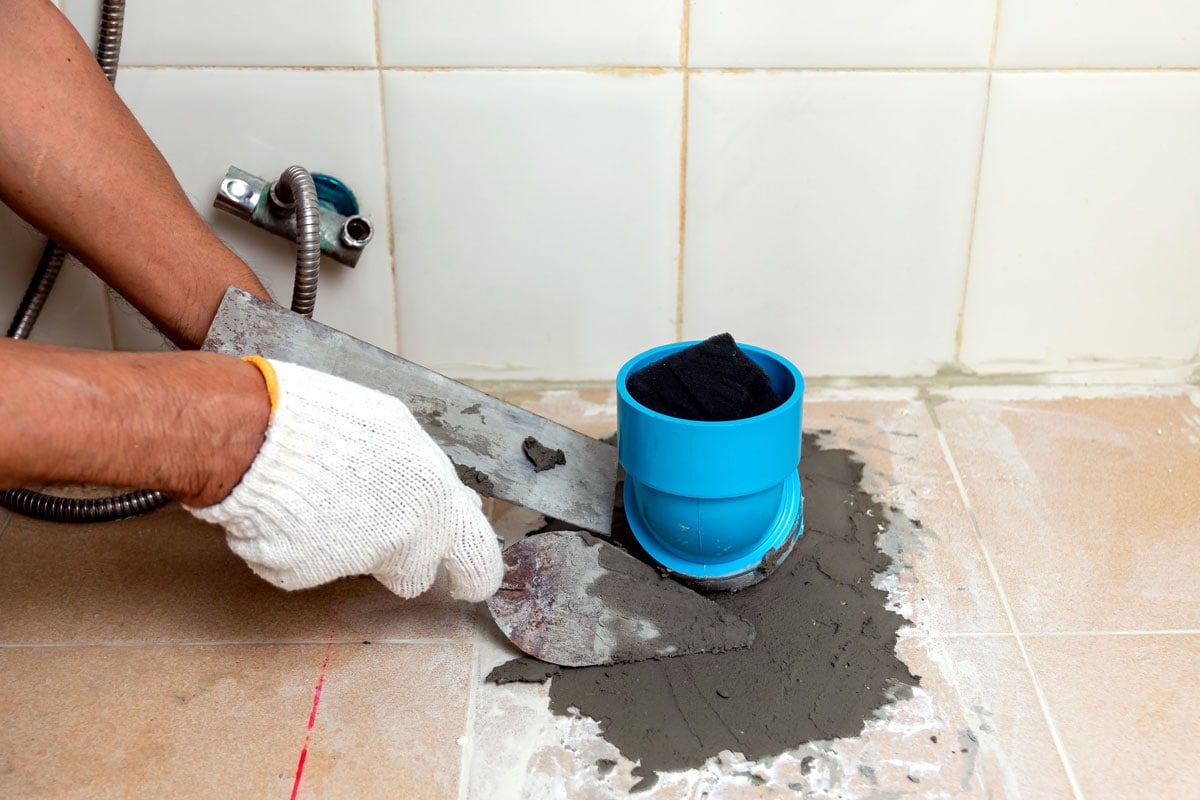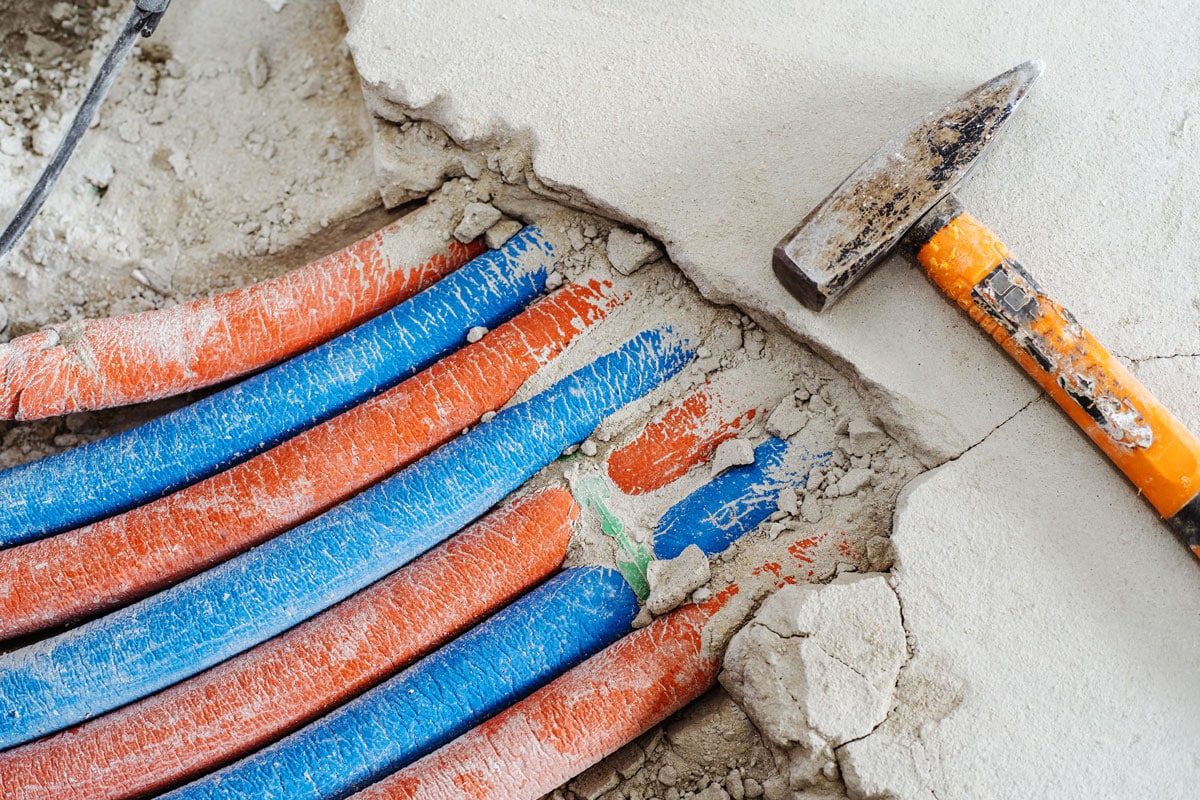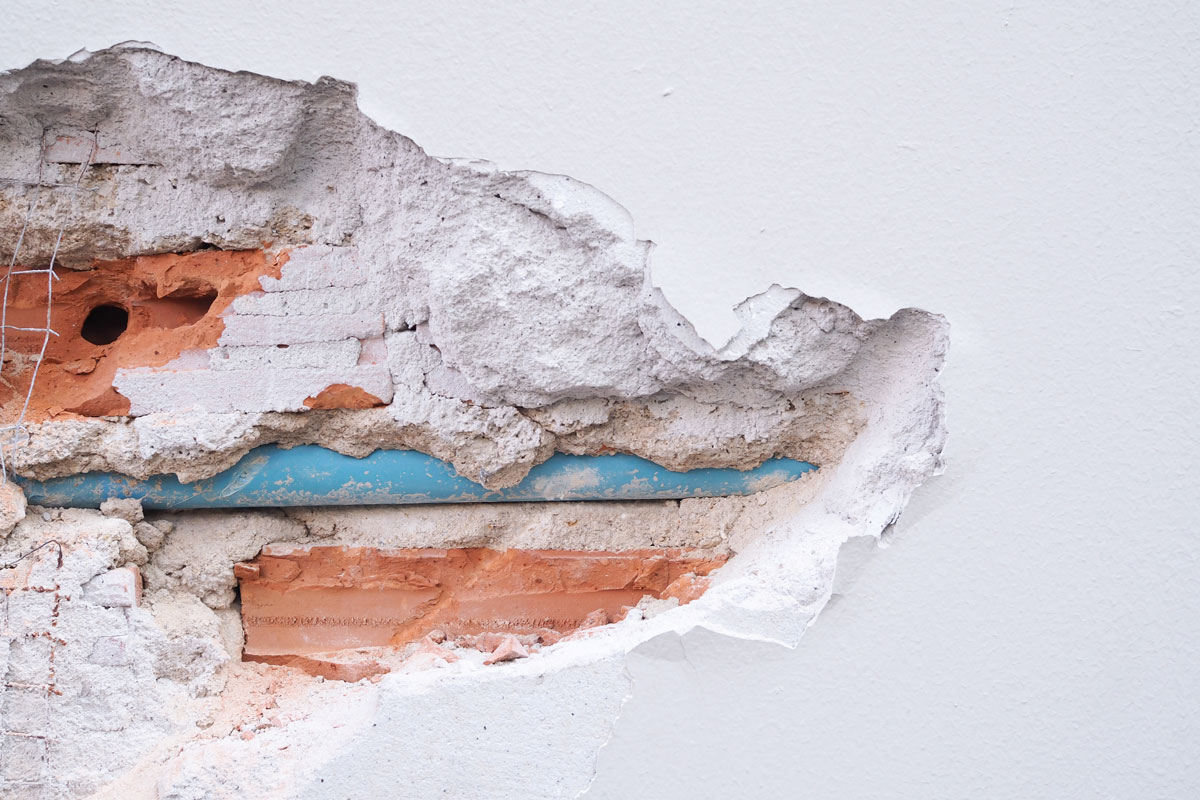The HVAC systems involve different types of pipes with varying requirements. Covering any holes with plaster can help prevent and fix the damage to pipes. Yet, the plaster cannot guarantee lasting protection if you don't know if you can plaster a specific pipe. We have gathered the answers if you can add plaster to different pipes.
You can plaster over pipes to hide them. However, the plaster can make it difficult to detect any holes and leaking. It will help if you know what type of pipes to apply on. When you plaster, make sure that you should not directly apply it to the pipes. There is nothing wrong with plastering the pipes as long as the application is correct.
When deciding to apply plaster, you need to understand how the pipes work at home. The pipes might be subject to harsh conditions and elements, such as gas and radiator pipes. Aside from the plaster, there are other materials you can use with it to cover the pipes. Continue reading to learn what pipes you can plaster over.
![photo of damaged wall of house broken blue pvc pipe fixed, Can You Plaster Over Pipes? [Inc.Plastic, Copper, Radiator, Gas, And More]](https://hvacseer.com/wp-content/uploads/2022/08/Can-You-Plaster-Over-Pipes-Inc.Plastic-Copper-Radiator-Gas-And-More.png)
Is Plastering Possible To Cover Pipes?
Yes, plastering is feasible to cover pipes. It is a common practice to conceal bare pipes at home to make the space more appealing. Before you use plaster, you must understand how plaster works and its composition.
Plaster is a common material for protecting walls, ceilings, and other interior home elements. The plaster comprises lime or gypsum, sand, water, and fiber to add to its adhesive and waterproof properties. You need to repeat the process of applying plaster to achieve the desired thickness.
Likewise, you should also know what type of pipe you are plastering on. The pipes differ based on their purpose. The elements flowing inside and its outside environment will influence your decision to add plaster.

Learn if you can add plaster over the following types of pipes:
Plastic/PVC
Plastering over plastic pipes is possible, but it is not a good course of action. The plastic contracts and expands when subjected to cold or hot temperatures. If you decide to plaster, you should retain enough depth cover.
Copper
It is common for plumbers to apply plaster around copper pipes to cover them. The usual problem with copper is its susceptibility to corrosion. According to copper.org, copper will not corrode in fine plaster with 80% water.
Gas
For gas pipes, it is better not to plaster them. The hot air will cause the pipes to expand or contract, causing cracks. Based on a forum answer, you should protect the pipe from corrosion with Bitumen paint or PVC tape. You can also use plasterboard for convenience to cover the pipes.
Radiator
Plastering over radiator pipes is possible, yet it can be useless. If you wish to proceed, you should add some felt lagging before directly applying plaster over the pipes. In that way, you can minimize corrosion and manage expansions.
You can achieve a tidy finish, but locating any holes or cracks will be challenging. You don't know when the boiler starts to lose pressure, and you need to find holes throughout the pipeline. In that case, you will need to break down walls to find the leaking.
Radon
In addition, pipe covers for radon are not good. The pipe covering will freeze the systems over winter. In effect, the pipes accumulate high levels of radon without removing it.

Regardless of what type of pipe you want to plaster, you should weigh the pros and cons. You should know the possible issues the pipe can encounter and if plastering is worth doing. Covering with plaster is effective in protecting the pipes with the right application. Plastering is good as long as it does not harm the pipes.
What Plaster To Use Over Pipes
The recommended plaster to use for any type of pipe is gypsum.
Gypsum plaster has calcium sulphate dihydrate and naturally occurring white crystalline. You should not confuse gypsum with plaster of pairs, which is a derivative only. With this plaster, your pipes will not corrode and have a longer life. It is also non-combustible and has good thermal properties. Gypsum-based plaster is flexible, so it is less prone to cracking.
Click here to see this product on Amazon.
If you choose cement, it has the same thermal capacity as gypsum but is not flexible. It is more prone to cracks, molds, and rust. Resistance to fire is high but becomes brittle and loses its bond.
Cement is not good for copper pipes because of its high alkalinity, which causes corrosion.
Click here to see this product on Amazon.
If you are unsure what to choose, you can ask for advice from HVAC professionals.

How To Plaster Over The Pipes?
The surface of pipes is different from walls and ceilings. You need to carefully apply the plaster so that you don't leave any part bare.
Before you can plaster, you should finish the plumbing installations to avoid destroying the pipes. Moreover, plasterers will use PVA as a primer over the surface. The solution allows a stronger bond of the plaster with the pipes.
To add plaster over the pipes, follow the process below:
- Prepare the surface of the pipes. Remove dirt, dust, or paint on the pipes.
- Also, do not forget to keep the work area clean, so protect any area or fixture you do not want plaster debris.
- Prime the pipes with a PVA and water solution. Some plasters already contain PVA.
- Prepare the enclosure, conduit, or skirting around the pipe, so you don't directly apply over them.
- Then, firm up the plaster before applying it to the surface.
- Flatten the plaster as you apply with a trowel. Ensure that there are no bumps and lumps. Wait for at least 209 minutes for the plaster to dry.
- After the first coat dries, apply the second coat.
- Smoothen the rough surface to have a polished look.
Is Plastering Pipes Costly?
Plastering is not expensive, especially if you do it yourself. The costs depend on the length of the pipes and the type of plaster you will use. Also, include in your budget the proper tools and equipment when plastering. Cement is more costly than gypsum and will vary with the brand.
If you let professionals do the job, the labor costs range from $2-10 per square footage. The rate can also change if there are many pipes to plaster.
Can You Have Pipes Behind Dot and Dab Plasterboard?
It is possible to have pipes behind the plasterboard. Yet, it depends on the type of pipes you want to hide.
Water pipes should be secure on the surface or chased into a wall. Gas pipes need more thorough planning and installation because of the hazards that might happen. You can also hide copper and plastic pipes, but you should ensure the proper installation.
You should observe the required distance from the board to the pipe, so there is no direct contact. The thickness of the pipes influences the depth behind the plasterboard. The larger the depth, the thicker dab you will need.
What To Do Instead Of Plastering Pipes?
If plastering doesn't work, you have other options for hiding the pipes. Here are some that you can do:
- Box the pipes in by creating an enclosure around the pipes. You can paint the box to match it with the walls and floor.
- Enclose horizontal pipes using skirting boards. There are different ways to skirt the pipes that you can match with the design of your room. In that way, it does not allow direct contact with the pipes.
- Use pipe sleeves to protect the pipe. You can choose various sleeve finishes and lengths suitable for your preferences.
Click here to see this product on Amazon.
Ultimately, it is up to you to plaster or follow the alternative solutions. The budget is negligible if the way you conceal the pipes does not serve its purpose. You should choose the option that will have greater benefits than the costs.
In Summary

Plastering over pipes is possible, but searching for leaks and cracks along the pipelines can be a hassle. Understand the function of the pipes before deciding to plaster over them. The plaster might not be able to withstand high and volatile temperatures.
Hence, you should choose the right plaster and observe the distance away from the pipes. You can use plasterboard and other pipe enclosures over the pipes before adding plaster. In the end, it is up to you if you plaster or not to hide the pipes.
Read more about pipes from these posts:



